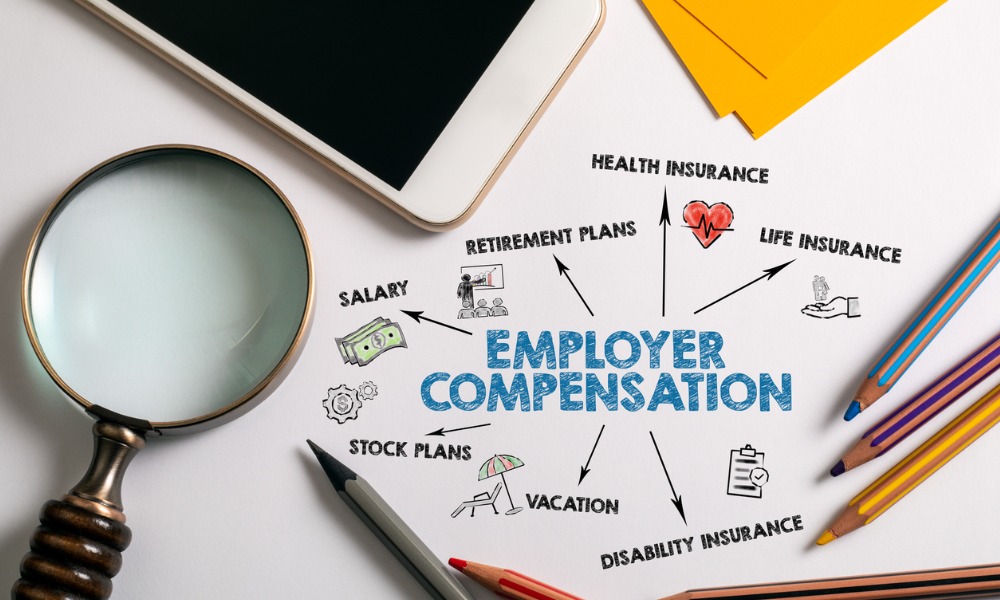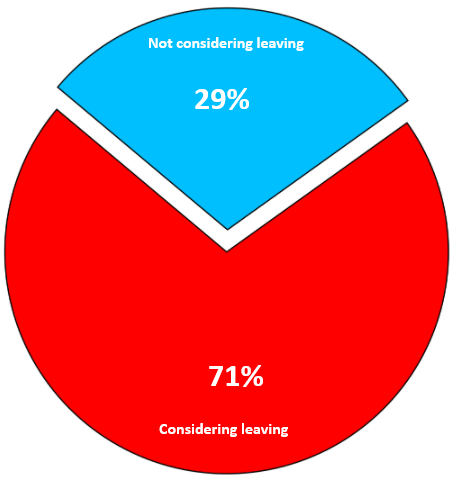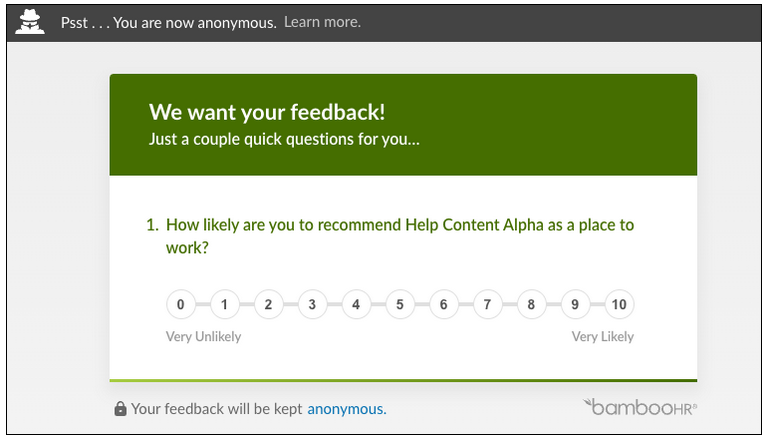The right compensation and benefits program is key to attracting and retaining top talent. Find out how you can improve your employment package in this guide

Updated: August 26, 2024
Hiring exceptional employees and retaining them is a top priority for any human resource department. To attract top talent, one of the most effective strategies is offering a compensation and benefits package that employees will find difficult to refuse.
But what exactly are employees after when it comes to compensation and benefits?
In this article, the Canadian HR Reporter discusses the importance of a competitive package and explores the different ways you can achieve it. If you’re an employer or HR professional looking to improve your compensation and benefits program, you’ve come to the right place. Read on and find out how you can create an attractive employment package in this guide.
Why are compensation and benefits important?
Nowadays, employees are demanding better compensation and benefits that go beyond a salary raise. This has led to an increasing number of companies creating a more attractive employment package for new hires and current employees alike.
The latest hiring trends survey by global recruitment firm Hays reveals that 71% of Canadian employees are seriously considering leaving their jobs due to reasons related to compensation. These include:
- stagnant wages
- job role dissatisfaction
- perceived benefits inadequacies
The figure represents an 11-percentage point increase from the previous year. The jump highlights the need for employers to evaluate their compensation strategies.
Having a competitive compensation and benefits program aids in job satisfaction. When an employee is happy with the employment package offered to them, it increases their satisfaction with your company’s practices. It also gives them a greater sense of purpose, diminishing their desire to find better job opportunities elsewhere.
Considering this, HR teams should pay close attention to what employees are after regarding compensation and benefits. In doing so, employers can come up with suitable employment packages that can motivate employees to come to work and deliver the best output possible. This can also keep your workers from leaving the company.
Find out how employers can use compensation and benefits to motivate employees in this guide.
How can you improve your company’s compensation and benefits program?
One of the keys to attracting top talent and retaining them is having a strong compensation and benefits program. Here are six practical ways to help you improve your company’s employment package.
1. Ensure your company has fair compensation and benefits
Employees are happy if they feel they are being paid fairly for their work. But they are more engaged if companies have a transparent compensation policy. Employees trust companies more if they understand the company’s decision-making process for employment packages. This is why you need to be able to explain your compensation and benefits program clearly to the rest of the organization.
Even if an employee disagrees with your company’s process, it opens a path for them to communicate their opinions and concerns. This, in turn, can lead to a healthy discussion on how you can improve your compensation and benefits packages.
2. Conduct job analysis and assessment
A great way to ensure fairness in employee compensation and benefits is conducting job analyses and evaluations. You should gather information from managers and employees on their job roles and use the analyzed data to re-evaluate and update employees’ job descriptions.
From there, you can classify, rank, and assess the job positions. This can help HR teams determine the proper compensation that employees should be getting based on hierarchy, competitors’ offers, and websites like Glassdoor’s salary calculator.
Conducting job analysis and evaluations also shows that your company bases decisions on factual data. This is crucial in maintaining fairness and transparency within the workplace.
3. Create a pay structure
Creating a pay structure based on the results of your company’s job analysis and evaluations ensures that employees are getting fair compensation and benefits.
Many companies start with the minimum wage and build up the pay rate from there. The compensation package is built up depending on the number of years an employee works, their job ranking, and their performance as an employee. Benefits are then added as additional rewards to attract employees.
4. Determine the industry-approved pay through market research
As an employer, you should conduct market research regularly to stay competitive when offering employment packages. Market trends and demands change a lot. This is why it is best for companies to conduct market research regularly.
Seeing what other businesses are willing to offer also helps you evaluate how they value their own employees and what they can contribute to improving employees’ work lifestyles. Again, looking at a website like Glassdoor to see your actual competitors is a smart move. Here’s a basic look at the data they show:

5. Conduct employee surveys to find out their sentiments
Surveying employees from all rankings on their needs and what they look for in a company gives perspective on what you can do to improve how you can take care of your workforce. Employees from one company can have different needs and wants compared to other employees from another company. Because of this, it is important for employers to understand their workforce and not solely rely on and copy other companies' compensation and benefits packages.
Employee surveys and feedback also reveal what employees think of the company. This information can help clarify any misunderstandings or catch any possible grievances employees could develop towards the company in the future. We use BambooHR for this here at Key Media, here’s an example for their website:

6. Communicate compensation policies and market research to employees
As mentioned earlier, it is essential that employees are aware of the company’s compensation policies and how employment packages are decided upon. Employees need to know they are being treated fairly when it comes to compensation. It also helps if they know that the company uses factual, accurate data gathered internally and externally to create the packages. This allows them to trust the company more and be more satisfied with their salary and other benefits.
Stay on top of the latest industry trends by visiting our Compensation and Benefits News Section. Be sure to bookmark this page for free access to breaking news and the latest industry developments.
What compensation and benefits are employees in Canada entitled to?
Employers in Canada provide two types of benefits to their employees:
1. Mandatory benefits
Also called statutory benefits, these are the benefits that Canada labour laws require employers to give their employees. These include:
Pension
The Canada Pension Plan (CPP) is a taxable benefit designed to replace a portion of an employee’s income when they retire. The government sets the maximum contribution amount based on the average wage increases in the country. The employer and the employee share the monthly contributions. The CPP contribution rate for 2024 remains at 5.95%, same as last year. The maximum contribution amount is $3,867.50, up from $3,754.45 in 2023.
The CPP is compulsory for most workers in Canada. The exceptions are:
- employees earning less than $3,500 each year
- workers in Québec who have a separate pension plan, called the Québec Pension Plan (QPP)
A secondary tier of additional maximum pensionable earnings was also introduced this year. Also referred to as CPP2/QPP2, this requires employees earning between $68,500 and $73,200 to contribute to their pension plan for a second time. The additional contribution rate is 4%, capped at $188 – calculated as ($73,200 – $68,500) x 4% = $188.
Employment insurance
Employment insurance (EI) provides temporary income support to individuals who lose their jobs due to reasons beyond their control, such as mass layoffs or work shortage. Most employees are entitled to benefits equal to 55% of their insurable weekly earnings up to a maximum amount. In 2024, the yearly insurable earnings were capped at $63,200 or $668 per week.
The maximum benefit period can range from 14 to 45 weeks, depending on a few factors. These include:
- regional unemployment rates
- the number of accumulated hours of employment over the preceding 52-week period or since an employee’s last claim, whichever is shorter
Legislated leaves
Employees in Canada can request time away from work to take care of certain life events. These include:
- family emergencies
- parental responsibilities
- pregnancy or maternity
- illness
- bereavement
- voting
Although mostly covered by EI benefits, these government-legislated leaves are job-protected. This means that employers must keep the employee’s position until they can return to work.
Paid time off
Most employees start earning vacation pay on the day they get hired. After their first year, they can start taking paid time off. Provinces and territories have their own set of rules regarding vacation pay and entitlements. How much compensation an employee receives while on vacation depends on these rules and your company’s policies.
In most jurisdictions, an employee is entitled to at least:
- two weeks of vacation each year after completing a year of employment with the same employer
- three weeks of vacation each year after completing five years of employment with the same employer
- four weeks of vacation each year after completing 10 years of employment with the same employer
Two weeks of vacation time accrues a 4% vacation pay. Three weeks of vacation get 6%, four weeks receive at 8%, and so on.
Find out more about how vacation pay in Canada works in this guide.
2. Supplemental benefits
Supplemental benefits are not legally required, but these can help employers attract and retain employees. Some examples are:
Supplemental health insurance
This type of health insurance plan offers coverage beyond the standard medical and hospital care that public healthcare policies provide. Private health plans also enable employees to access the care they need with shorter waiting periods. Most policies provide coverage for dental and eye care, prescription medication, and other paramedical procedures.
Find out everything you need to know about health insurance in Canada in this Insurance Business guide.
Group registered retirement savings
Many employers offer supplemental pension benefits and contribute a higher amount to a worker’s retirement fund. One way of doing so is through group registered retirement savings plans. In a GRRSP, employers can match a tax-deductible percentage of the employee’s contributions. A deduction limit, however, applies. If your contribution exceeds the deduction limit by $2,000, you are required to pay a 1% tax on the excess contributions.
Life and disability coverage
Some employers offer life insurance and long-term disability coverage as part of their compensation and benefits packages.
Life insurance works by providing a tax-free lump-sum benefit to the employee’s family after they die. It is designed to help grieving families soften the financial impact of losing a loved one. With the right policy, this type of coverage can help families pay off loans and debts and meet daily living expenses.
Disability insurance pays out a portion of the employee’s income if an unexpected illness or injury prevents them from working and earning a living. Just like a life policy, disability coverage helps the worker’s family pay for their daily living expenses.
It is natural for employees to seek different benefits based on their lifestyle, goals, and needs. However, there are some benefits that a majority are looking for, and it is up to employers to understand what those benefits are and incorporate them into the organization.
For example, according to Robert Half’s 2024 Salary Guide, paid time off (PTO) is the most common benefit employees look for in a job position. Offering paid leave credits whether it’s for vacation, illness, bereavement, or for volunteer work is a great way to promote work-life balance and to lessen work stress and burnout.
There has been an increasing demand for remote and flexible work schedules since the COVID-19 pandemic began. Allowing employees to work at their preferred time and place results in better productivity rates. This is because employees no longer feel forced to produce half-baked work results due to the work schedule not complementing their working habits. As long as employees are able to pass projects and tasks on time, there is no reason why companies should not offer remote and flexible work arrangements.
Where can you find the companies offering the best compensation and benefits?
If you are looking for companies to model your compensation and benefits program from, our Special Reports page is the place to go. The companies featured in our special reports have been nominated by their peers and vetted by our panel of experts as trusted and dependable market leaders.
Recently, we unveiled the five-star winners of our Best Company Employee Rewards Programs in Canada awards. Find out more about how these industry leaders attract top talent and show appreciation to their employees in this special report.
What should employers prioritize when creating a competitive compensation and benefits package? Let us know in the comments.




